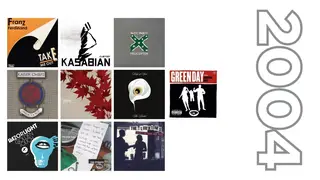What was The Beatles' first Number 1 single?
10 November 2023, 18:17 | Updated: 12 November 2024, 15:22

With the "final" Beatles song Now & Then topping the charts this weekend, let's get to the bottom of which track really was the Fab Four's chart-topper. It gets messy.
Listen to this article
What was the first Number 1 single by The Beatles? That's easy.
*Does a quick Google* It was From Me To You in May 1963. Cheers.
Except, it's not as simple as that.
The music business 60 years ago wasn't as regimented as it is in 2023. For example, there was no "official album release day" like there is today - most labels favoured a Friday release to catch people who had just been paid in an era when the weekly wage packet was still a thing.
More importantly, there wasn't one unified chart that everyone in the music business agreed on. Each of the music papers had their own chart, a tradition started by the NME in 1952, who surveyed around 20 record shops to calculate their first Top 12. They were followed by the Record Mirror, whose Top 10 started in 1955 and Melody Maker's Top 20 in 1956.
And here's where the confusion really begins. The trade paper Record Retailer began their own Top 50 singles chart in March 1960, which Record Mirror picked up from 1962. Because the Record Retailer chart was independently audited and included 50 releases in their chart, it was retrospectively felt that their data was the most accurate - even though some critics claim that the NME was polling more stores for its chart.

When the The Guinness Book of British Hit Singles was first published in November 1977, authors Paul Gambaccini, Mike Read, Tim and Jo Rice used the Record Retailer data between 12th March 1960, when their chart started and 15th February 1969, when the British Market Research Bureau (BMRB) officially took over the task of compiling the nation's pop charts. From that point on, the Top 40 would be announced on Radio 1 on Tuesday lunchtimes and would continued to be printed in Music Week, the successor to Record Retailer from 1972.
This, unfortunately for Fab Four lovers, means that pretty much the entire career of the band falls under the eye of the Record Retailer chart. So why does this matter?
The Beatles' second single was Please Please Me, which the band's producer considered to be their strongest material yet - in fact, when they finished recording the track, he famously told the four musicians: "Congratulations, you've just made your first Number 1."

And Martin was right, in a way. The single was released on Friday 11th January 1963. On the NME, Melody Maker and Disc charts, the single climbed to the top, knocking off Australian country star Frank Ifield and his tune Wayward Wind in the week ending 23rd February.
However, Record Retailer begged to differ. Their chart calculated that Frank Ifield held the top spot for that week, pushing The Beatles back to Number 2, a situation which continued into the next week. Please Please Me finally dropped back to Number 3 behind Cliff Richard's dreaded Summer Holiday. The Cliff tune crept to the top the following week, leaving The Beatles in the runner-up spot again. Number 2 was the highest chart position that Please Please Me reached, according to Record Retailer.
As the Guinness Book Of Hit Singles uses the Record Retailer chart for its 1963 data, this means that Please Please Me - officially - peaked at Number 2. The first Beatles single which everyone agreed on as hitting the Number 1 spot was the follow-up From Me To You in April 1963.
This ranking has been followed right through the release of The Beatles' 1 compilation in 2000, which doesn't include the track (but does include its predecessor Love Me Do, which topped the US chart in May 1964, right in the midst of American Beatlemania).
Regardless of the confusion over their first chart-topper, The Beatles went on to have 17 Number 1 singles in the 1960s, finishing with The Ballad Of John And Yoko in May 1969.

Giles Martin reveals the magic behind The Beatles' new song













